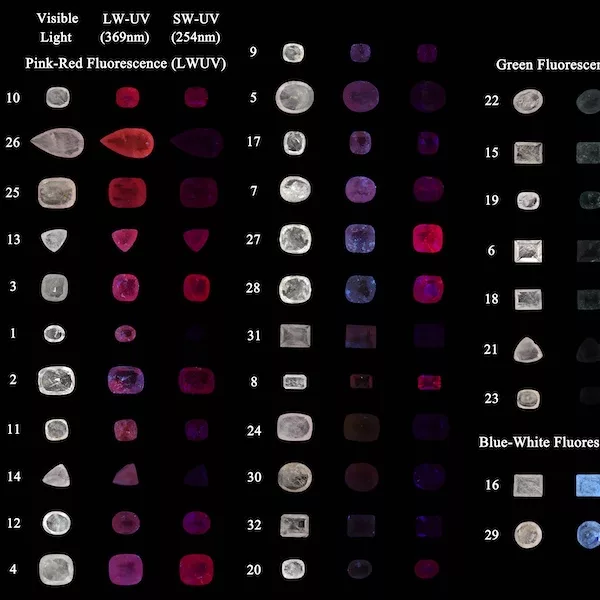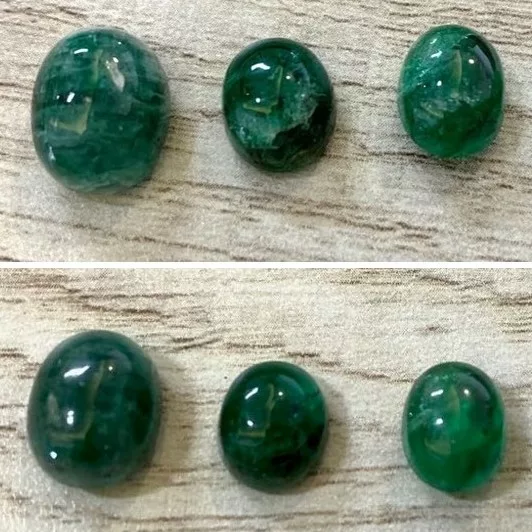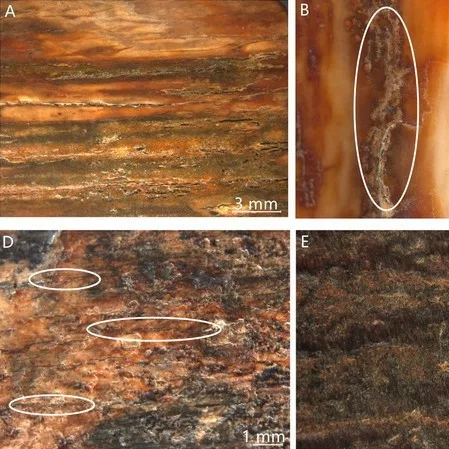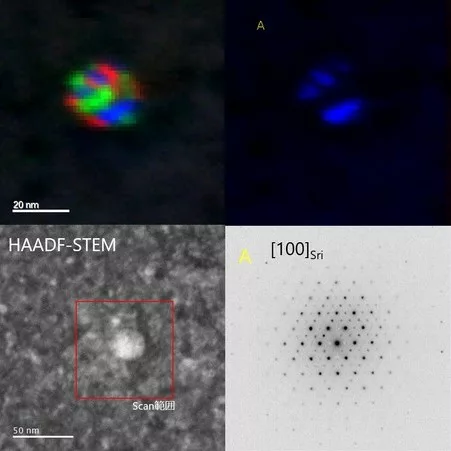Gemological and Luminescence Characteristics of Taaffeites from Mogok, Myanmar
Keywords: taaffeite, Mogok, gemological characteristics, fluorescence spectroscopy
Taaffeite is a rare gem that has been found in different localities such as Tanzania, Sri Lanka, China, and Mogok, Myanmar. Systematic research on the taaffeite from Mogok, Myanmar, is still lacking. In this study, thirty-two taaffeites from Mogok were collected and investigated by conventional gemological testing, laser ablation inductively coupled plasma mass spectrometry (LA-ICP-MS), Raman spectrometry, and fluorescence spectrometry.
These samples were observed and photographed under visible light and UV light (Figure 1). According to their fluorescence colors under LWUV light, the samples can be divided into three categories: the pink-red, green, and blue-white fluorescence groups. All of them revealed inert to bright pink fluorescence under SWUV light.
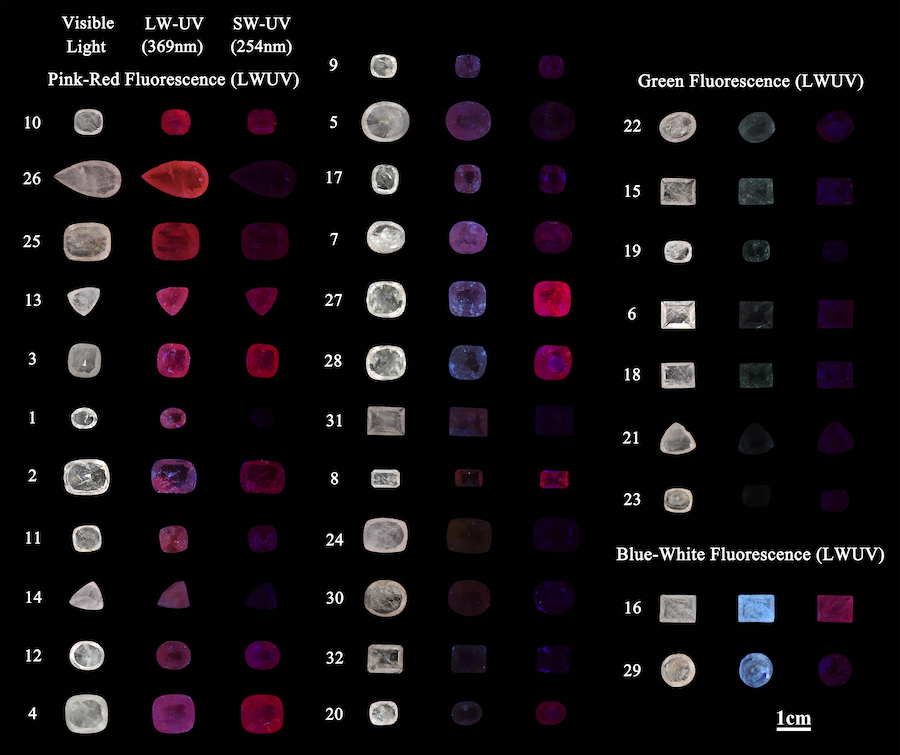
Various inclusions were found in these taaffeites. The inclusions can be divided into five types: (1) transparent columnar and irregular inclusions (Figure 2a,b); (2) orange and brown intrusions, mostly filling in the fissures or healed fissures of the host crystal (Figure 2c,d); (3) black punctual and flake inclusions, which occur in large quantities in samples 14 and 16 and are mostly hexagonal plates (Figure 2e,f); (4) fissures and healed fissures (Figure 2g,h); (5) multi-phase inclusions, which are mostly transparent tubes containing black dots or irregular minerals (Figure 2i,j).
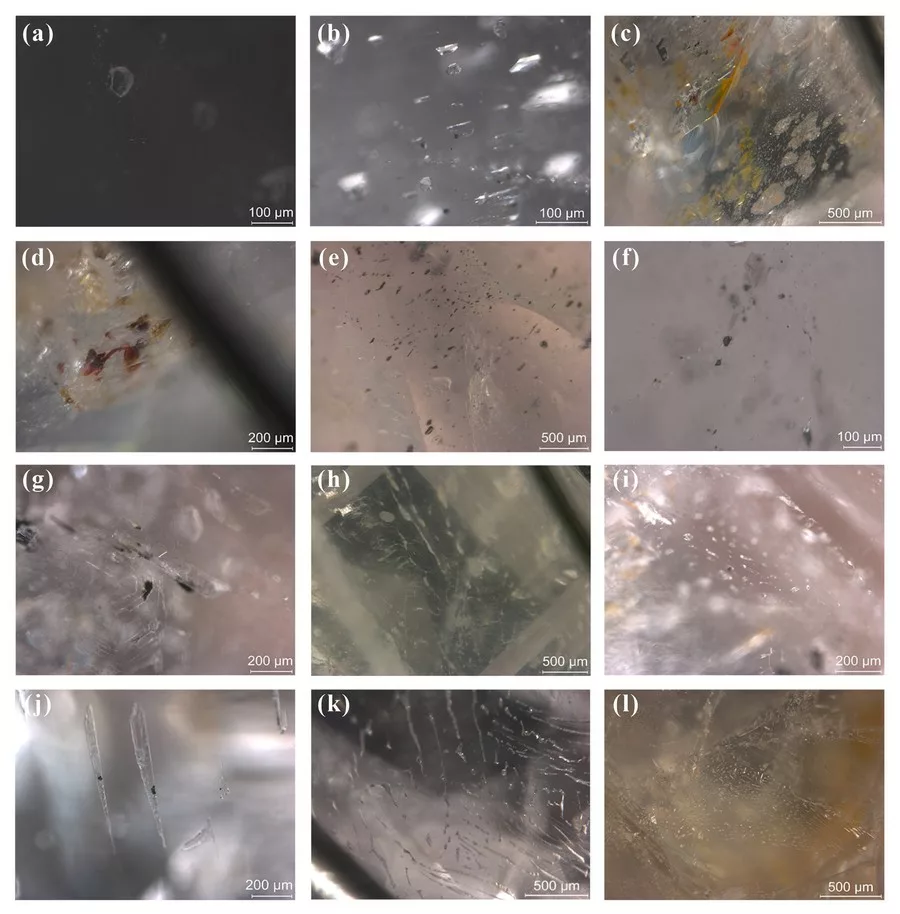
The inclusions of the taaffeite samples were identified by Raman spectroscopy (Figure 3). The mineral inclusions of taaffeites were identified as calcite, forsterite, celestite, dolomite, and graphite. In addition, some transparent tubular or columnar inclusions were filled with CO2 .
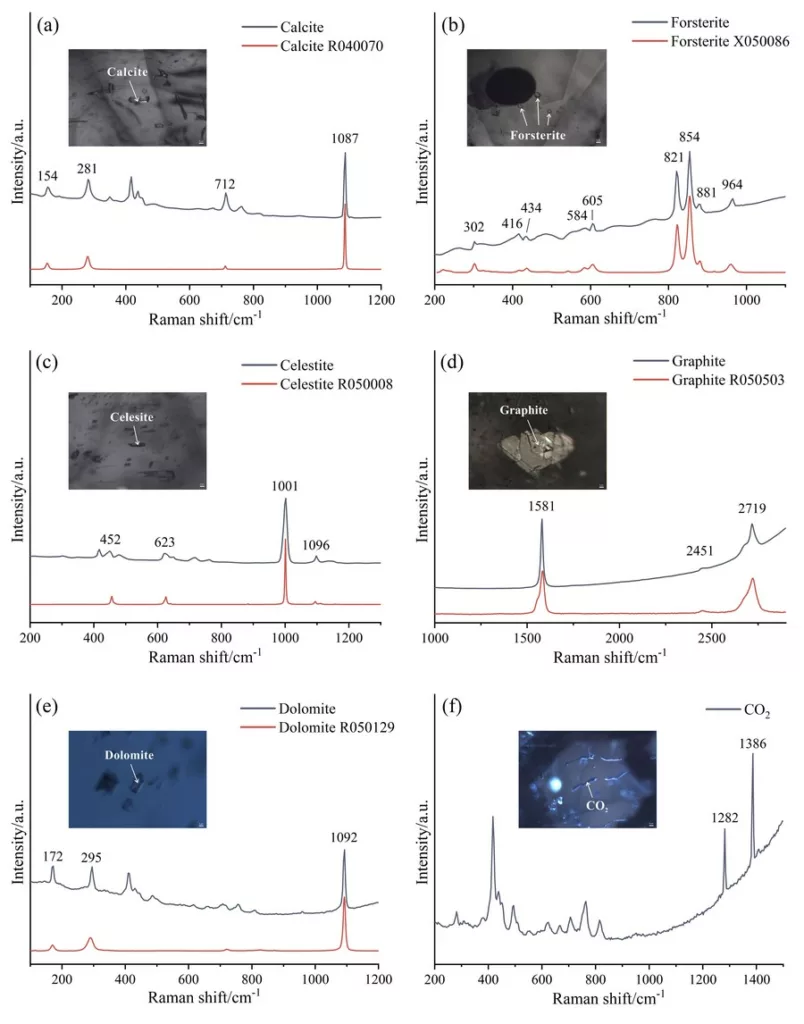
In general, taaffeite shows inert or chalky fluorescence under long-wave ultraviolet (LWUV) light and inert fluorescence under short-wave ultraviolet (SWUV) light (Malcherek and Schluter, 2016; Schmetzer et al., 2007; Schmetzer et al., 2000; Schmetzer et al., 2005). Using two-dimensional emission spectra, it was found that these samples with pink-red fluorescence had two very strong peaks at 686 nm and 690 nm in the red region. Samples showing green and blue-white fluorescence had strong peaks at 439 nm and 464 nm in the blue region, a relatively weak peak in the green region, and two very weak peaks at 686 nm and 690 nm in the red region. When combined with the chemical composition data from LA-ICP-MS, this suggests that Cr3+ is the activator of the pink-red fluorescence, Mn2+ is responsible for the green fluorescence, and Fe inhibits the generation of fluorescence.

References:
- Malcherek, T., Schluter, J., 2016. Crystal Structure of Crbearing Mg3 BeAl8 O16, a New Polytype of Magnesiotaaffeite2N’2S. Acta Crystallographica Section E: Crystallographic Communications, 72, 1060-1063.
- Schmetzer, K., Kiefert, L., Bernhardt, H.-J., 2000. Purple to Purplish Red Chromium-bearing Taaffeites. Gems & Gemology, 36(1), 50-58.
- Schmetzer, K., Kiefert, L., Bernhardt, H.-J., Burford, M., 2005. Two Remarkable Taaffeite Crystals from Sri Lanka. The Journal of Gemmology, 29(7), 461-466.
- Schmetzer, K., Krzemnicki, M., Hänni, H.A., Bernhardt, H.-J., Pettke, T., 2007. Gem-quality Taaffeites and Musgravites from Africa. The Journal of Gemmology, 30(7), 367-382

